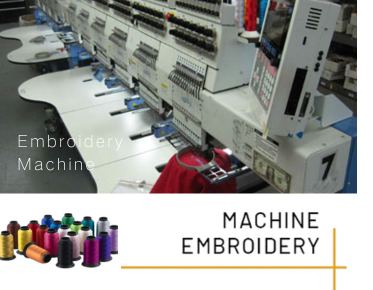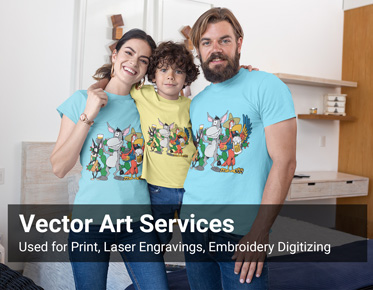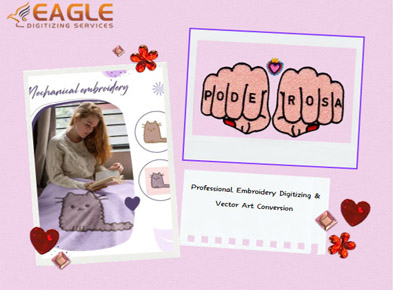How to Use a Multi-Position Embroidery Hoop for Stunning Designs?
Welcome to the vibrant and intricate world of multi-position embroidery. If you’re reading this, you’re probably someone who appreciates the art of transforming fabric into a canvas of creativity. Embroidery has been a cherished craft for centuries, but with modern advancements, it has become even more dynamic and versatile. Multi-position embroidery hoops are one of those innovations that have revolutionized how we approach our stitching projects. For the best embroidery digitizing service, please feel free to contact us.
Why Multi-position Hoops Are Game Changers
Multi-position hoops are true game-changers in the embroidery world. They allow for larger, more complex designs that were once only possible through painstaking manual adjustments. These hoops enable embroiderers to seamlessly shift the fabric without needing to rehoop, maintaining precise alignment and continuity in the design. Whether you're a hobbyist or a professional, these tools expand your creative possibilities, making them an indispensable part of your embroidery toolkit.
Understanding Your Multi-position Embroidery Hoop
What is a Multi-position Embroidery Hoop?
A multi-position embroidery hoop is a specialized tool that holds fabric taut while you embroider but with a twist. Unlike traditional hoops, multi-position hoops allow you to move the fabric within the hoop’s frame to different positions without unhooping and rehooping. This capability is particularly useful for large designs or continuous patterns that span beyond the hoop’s immediate working area.
Key Features of Multi-position Hoops
Multi-position hoops boast several key features that set them apart from their single-position counterparts. They often come with locking mechanisms that ensure the fabric remains taut and properly aligned when repositioning. Adjustable arms or slots provide flexibility in fabric placement, and some even include built-in grid systems for precise alignment. These features collectively enable more efficient and accurate embroidery, saving time and reducing frustration.
Choosing the Right Multi-position Hoop
Different Types of Multi-position Hoops
There are various types of multi-position hoops to choose from, each designed to cater to different needs. Some are designed specifically for certain embroidery machines, while others are more universal. You can find hoops in various sizes, from small ones perfect for intricate details to large ones ideal for expansive designs. Understanding the types available will help you make an informed decision based on your specific projects and machine compatibility.
Factors to Consider When Selecting Your Hoop
When selecting a multi-position hoop, consider factors such as the size of your usual projects, compatibility with your embroidery machine, and the type of fabric you typically use. It's also important to think about the hoop’s build quality and ease of use. A sturdy, well-constructed hoop will provide better stability and durability. Additionally, look for features like easy adjustment mechanisms and clear alignment markers, which can significantly enhance your embroidery experience.
Getting Started with Your Multi-position Hoop
Unboxing and Assembling Your Hoop
Upon receiving your multi-position hoop, the first step is to unbox and assemble it. Carefully remove all components from the packaging, ensuring that nothing is missing. Follow the manufacturer's instructions to assemble the hoop, paying close attention to the locking mechanisms and adjustment arms. Proper assembly is crucial for the hoop’s functionality, so take your time to ensure everything is set up correctly.
Familiarizing Yourself with the Parts
Familiarize yourself with the various parts of your multi-position hoop. Most hoops will have a mainframe, adjustable arms or slots, locking mechanisms, and sometimes additional alignment tools. Understanding the function of each part will make it easier to use the hoop effectively. Take a few moments to practice adjusting the arms and locking the fabric in place, getting a feel for how the hoop operates.
Setting Up Your Embroidery Machine
Machine Compatibility and Setup
Before you can start embroidering with your multi-position hoop, ensure that your embroidery machine is compatible with it. Check the machine’s manual or the hoop’s specifications to confirm compatibility. Once confirmed, attach the hoop to your machine according to the manufacturer's instructions. Proper setup is vital for smooth operation, so make sure the hoop is securely attached and that the machine recognizes it.
Adjusting Settings for Multi-position Embroidery
Adjust your embroidery machine settings to accommodate the multi-position hoop. This may involve calibrating the hoop's position within the machine’s software, setting the correct tension, and selecting the appropriate stitch length and type. Each machine is different, so refer to your machine’s manual for specific instructions on adjusting these settings for optimal performance.
Preparing Your Fabric
Selecting the Right Fabric for Multi-position Embroidery
Choosing the right fabric is essential for successful multi-position embroidery. The fabric should be sturdy enough to withstand the tension of the hoop and the stitches, yet flexible enough to move within the hoop. Common choices include cotton, linen, and canvas. For more intricate designs, consider using fabrics with a tighter weave to prevent distortion.
Prepping and Stabilizing Your Fabric
Properly preparing and stabilizing your fabric is crucial to achieving clean, professional-looking embroidery. Begin by ironing the fabric to remove creases. Then, apply a suitable stabilizer to the back of the fabric to prevent shifting and stretching during embroidery. The fabric and complexity of your pattern will determine which stabilizer you use. Cutaway stabilizers work well for dense designs, while tear-away stabilizers are ideal for lighter, less complex patterns.
Hooping Techniques for Multi-position Embroidery
Basic Hooping Methods
Basic hooping methods for multi-position embroidery involve placing the fabric between the inner and outer hoop rings, ensuring it is taut and smooth. Begin by loosening the outer ring and placing the fabric over the inner ring. Then, press the outer ring over the fabric, tightening the screw or locking mechanism to secure it. Check for any wrinkles or slack and adjust as needed before locking the hoop into position.
Advanced Hooping Techniques
Advanced hooping techniques can greatly enhance your embroidery projects. These include floating, where the fabric is hooped loosely with additional stabilizers, and multi-hooping, which involves moving the fabric within the hoop to continue a design seamlessly. Mastering these techniques allows for greater flexibility and creativity in your embroidery, enabling you to tackle larger and more complex projects with ease.
Positioning Your Design
Tips for Perfect Design Placement
Achieving perfect design placement is an art that requires precision and practice. Start by marking the center and key points of your design on the fabric using a water-soluble pen. Use these markings to align the fabric within the hoop accurately. Double-check the alignment before starting the embroidery to ensure the design will be positioned correctly.
Using Templates and Markings
Templates and markings are invaluable tools for accurate design placement. Many multi-position hoops come with built-in grid systems or templates that can be placed over the fabric. These guides help you position the design precisely where you want it. If your hoop doesn’t come with a template, you can create your own using a piece of transparent plastic or tracing paper.
Embroidering with a Multi-position Hoop
Starting Your First Multi-position Project
Starting your first multi-position project can be both exciting and daunting. Begin by selecting a simple design that fits within the hoop’s working area. Follow the steps outlined in the previous sections to prepare your fabric, set up your machine, and position your design. As you embroider, monitor the fabric’s tension and alignment, making adjustments as needed to ensure a smooth and successful project.
Troubleshooting Common Issues
Common issues in multi-position embroidery include misalignment, puckering, and thread breaks. To troubleshoot misalignment, ensure the fabric is properly stabilized and that the hoop is correctly positioned. For puckering, check the fabric tension and use a suitable stabilizer. Thread breaks can often be resolved by adjusting the machine’s tension settings and using high-quality thread.
Changing Positions Mid-project
Seamlessly Switching Hoop Positions
One of the main advantages of multi-position hoops is the ability to switch positions mid-project without disrupting the design. To do this seamlessly, release the locking mechanism and carefully move the fabric to the next position, ensuring it remains taut and aligned. Lock the hoop in place and continue embroidering, checking periodically to ensure the alignment remains consistent.
Avoiding Gaps and Overlaps
Avoiding gaps and overlaps in your design requires careful planning and execution. Use the alignment markers and templates to position the fabric accurately before each shift. Overlap the stitching areas slightly to ensure there are no gaps between sections. Practice and attention to detail are key to mastering this technique.
Common Mistakes and How to Avoid Them
Misalignment Issues
Misalignment is a common mistake in multi-position embroidery, often caused by improper hooping or shifting fabric. To avoid this, double-check the fabric alignment before starting and after each position change. Use alignment markers and templates to guide your placement, and ensure the fabric is securely locked in the hoop.
Fabric Slippage and Tension Problems
Fabric slippage and tension problems can ruin an embroidery project. To prevent slippage, use a suitable stabilizer and ensure the fabric is taut in the hoop. For tension issues, adjust the machine settings and use high-quality threads. Regularly check the fabric and thread tension during embroidery to maintain consistent results.
Creative Project Ideas
Unique Projects to Try with Your Multi-position Hoop
With a multi-position hoop, the possibilities are endless. Try creating large wall hangings with intricate designs, personalized home décor items, or custom clothing embellishments. Experiment with different fabrics and threads to explore new textures and effects. The versatility of a multi-position hoop allows you to bring your most ambitious creative ideas to life.
Inspiring Examples from the Embroidery Community
The embroidery community is full of inspiring examples of what can be achieved with a multi-position hoop. From detailed landscapes and portraits to elaborate monograms and logos, there’s no limit to the creativity and skill on display. Join online forums and social media groups to share your projects and gain inspiration from fellow embroiderers.
Using Additional Accessories
Enhancing Your Embroidery with Extra Tools
Additional accessories can enhance your embroidery projects and streamline your workflow. Tools such as hooping aids, alignment grids, and specialty needles can improve accuracy and efficiency. Explore the available accessories for your machine and hoop to find those that best suit your needs.
Finding the Best Accessories for Your Hoop
Finding the best accessories for your multi-position hoop involves researching and experimenting with different tools. Look for accessories that address specific challenges you encounter, such as alignment aids or specialized needles. Reading reviews and seeking recommendations from other embroiderers can also help you identify useful additions to your toolkit. For custom embroidery needs, Eagle Digitizing offers embroidery digitizing services to help you achieve precise and professional results.
Embroidery is a journey of continuous learning and creativity. Don’t be afraid to experiment with new techniques, materials, and designs. Each project is an opportunity to refine your skills and express your artistic vision. Embrace the challenges and enjoy the process, knowing that with a multi-position hoop and the support of Eagle Digitizing's embroidery digitizing services, your embroidery possibilities are limitless.



